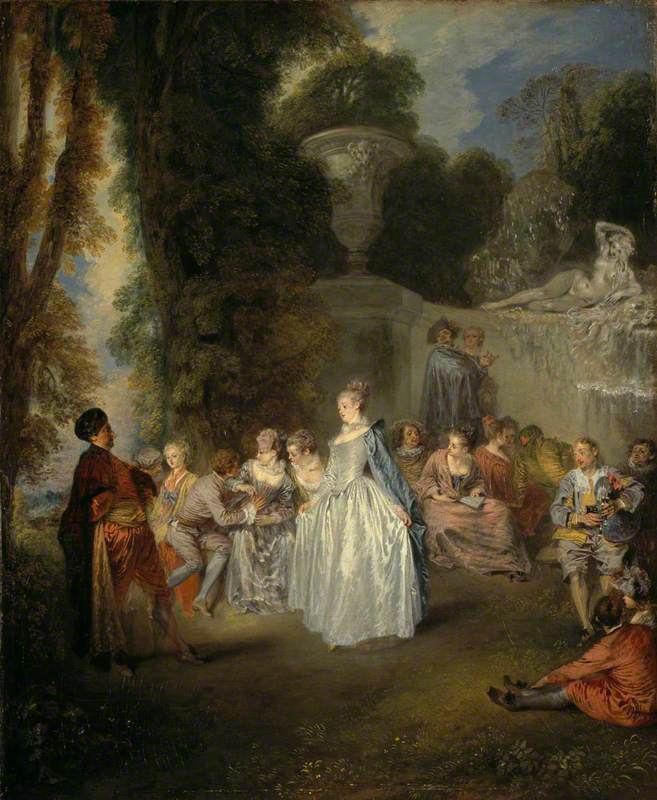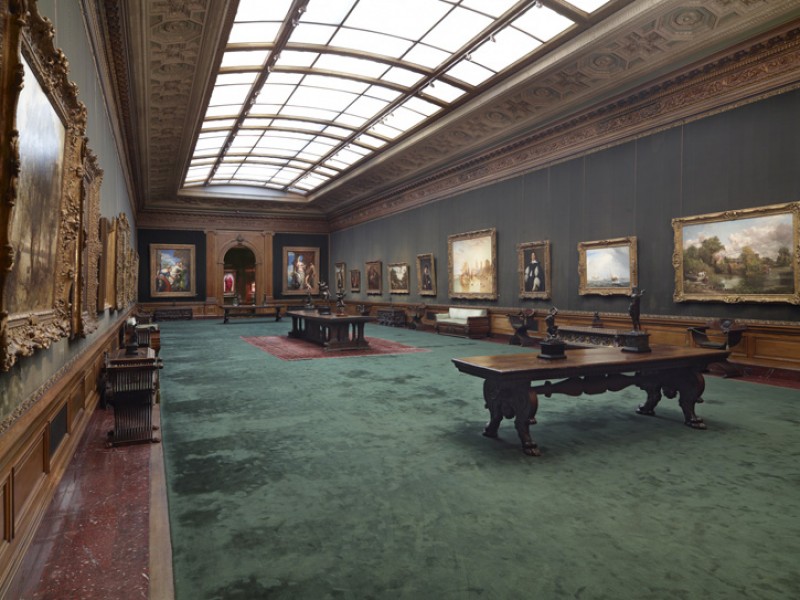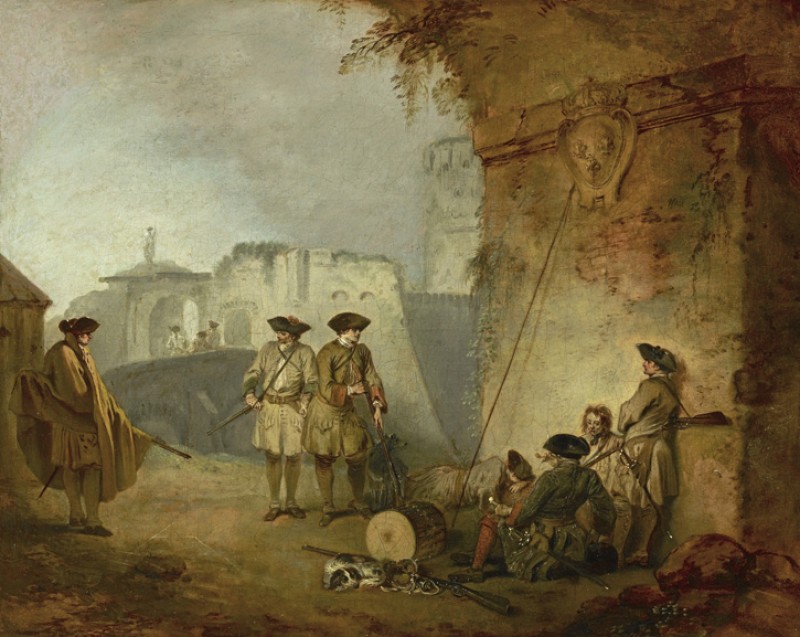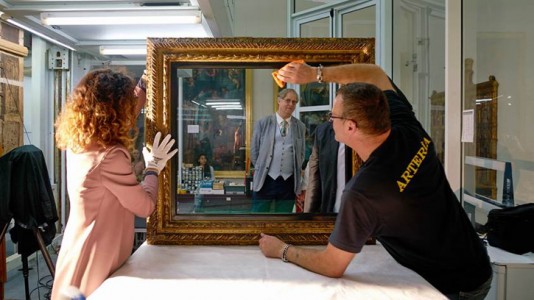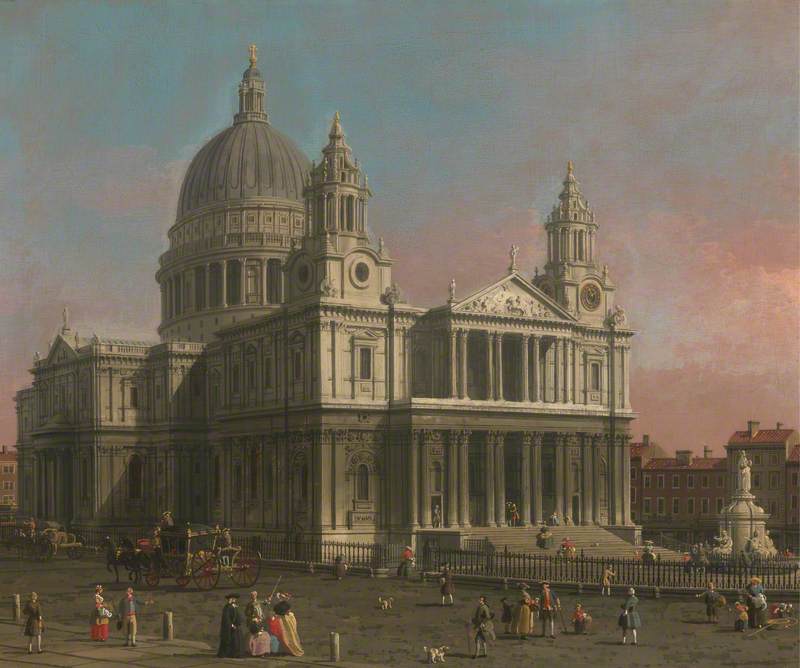When Henry Clay Frick died in 1919, he left his house, at 1 East 70th Street in New York, and his extraordinary collection of artworks to the public, thereby founding The Frick Collection. One of the European models he had considered when creating the museum was London’s Wallace Collection. Frick’s collection included a rich array of European masterpieces, particularly in the field of eighteenth-century French art. While works by François Boucher and Jean-Honoré Fragonard are among the museum’s most celebrated pictures, Frick never acquired a painting by Jean-Antoine Watteau.
The Frick filled this gap in 1991 with the acquisition of The Portal of Valenciennes. A small painting from circa 1710, it shows a group of soldiers at rest outside a city gate. Watteau grew up in Valenciennes and would have known soldiers who fought in the War of the Spanish Succession (1701–1714). Our small Watteau is atypical of the artist’s oeuvre, and it is for this reason that I particularly love it. When we think of Watteau, we think of the great artist of the fêtes galantes, of extraordinary images of lovemaking and delight set in idyllic gardens, not of military subjects. I would love to hang one of Watteau’s more canonical paintings with our Portal of Valenciennes.
There are many masterpieces by Watteau, especially in Paris and Berlin, but a significant number of them are in the United Kingdom. The Wallace Collection, of course, has many canvases by Watteau, and Dulwich Picture Gallery (where I worked as Chief Curator between 2006 and 2010) has the marvelous Plaisirs du Bal. But my favourite painting by Watteau is in Edinburgh, in the Scottish National Gallery – the small, impossibly beautiful Fêtes Vénitiennes (1718–1719). Watteau painted with a notoriously unusual technique that has caused many of his paintings to be prone to damage during restoration, but the Edinburgh painting is pristine, as fresh and luminous as a Watteau should be. A woman in a silvery satin dress stands in the middle of a garden, surrounded by courtly admirers in fancy dress. A statue of Venus presides over the scene from the top of a fountain. Most of the inhabitants of this enchanted garden are paired: men and women sit under the shady canopy of trees, next to the cooling waterfalls of the grandiose fountain. The main figure stands midway between two men: one, also standing, invites her to dance, and another, seated to the right, plays a musette. The figure in red is a portrait of the Franco-Flemish painter Nicolas Vleughels, who was Watteau’s flat mate on rue des Fossés Saint-Victor in Paris, around the time this canvas was painted. The musette player is none other than Watteau himself. Within this joyous group of people there is something melancholic in the way the woman in silver and Vleughels look at each other, with Watteau longingly looking at her from the side. We don’t know the precise meaning of this painting. Its title probably derives from an opéra-ballet of the same name, first performed in 1710. As a specialist in Venetian Renaissance art, I am particularly drawn to the 'Venetian' aspect of this work. Paolo Veronese, the painter I admire above all others, is known to have been a particular influence on Watteau, and the French painter often used figures inspired by works by the Venetian artist.
I would love to hang Watteau’s Fêtes Vénitiennes at the Frick Collection. In fact, I already have! The picture came to New York between November 2014 and February 2015 as part of the Frick’s exhibition Masterpieces from the Scottish National Gallery. Being able to see it every day in our gallery was an extraordinary experience and served only to reaffirm my adoration for this most perfect work of art.
Xavier F. Salomon, Chief Curator of The Frick Collection, New York
